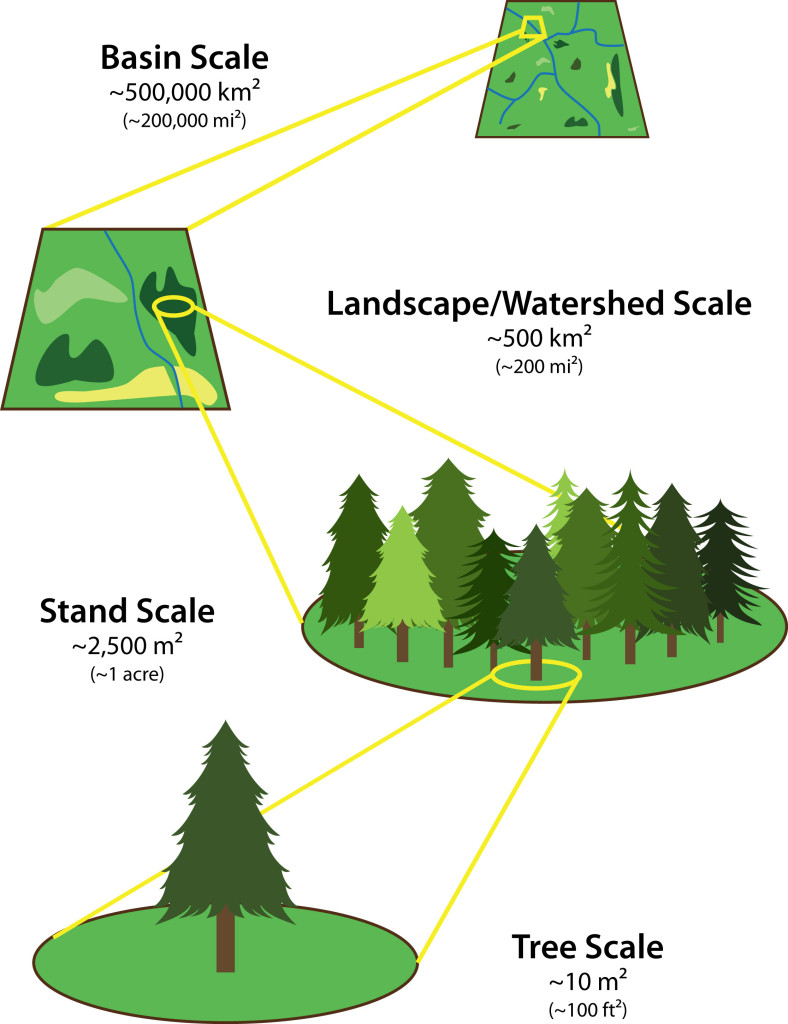Evan Pugh or Evan Crouch?
Before the summer of 2012 my legal name was Evan Pugh. I earned a PhD in Eric Small Tilton’s Terrestrial Hydrology Research Group at the University of Colorado Boulder while that was still my name. I also published the scientific papers included below under that name. When I married my wife, I took her last name and my legal name is now Evan Crouch.
Research Interests
I am currently a Research Associate (postdoctoral fellow) attached to the Aerospace Engineering Sciences department at the University of Colorado Boulder, though this is a nominal appointment (I’m a full time web developer). My graduate school research bridged the topics of hydrology and ecology and focuses on understanding the impact that vegetation has on the terrestrial water cycle and surface energy budget. Though my area of emphasis was forest hydrology, I strongly believe in interdisciplinary approaches to research and education.

Refereed Publications
Trahan N.A., Dynes E.L., Pugh E.T., Moore D.J.P., and R.K. Monson. (2015) Changes in soil biogeochemistry following disturbance by girdling and mountain pine beetles in subalpine forests, Oecologia. doi: 10.1007/s00442-015-3227-4![]()
Perrot D.O., Molotch N.P., Musselman K.N., and Pugh E.T. (2014), Modeling the effects of the Mountain Pine Beetle on snowmelt in a subalpine forest, Ecohydrology. 7: 226-241. doi: 10.1002/eco.1329![]()
Buma B., Pugh E.T., and Wessman C.A. (2013), Effect of the current major insect outbreaks on decadal phenological and LAI trends in southern Rocky Mountain forests, International Journal of Remote Sensing 34: 7249–7274. doi: 10.1080/01431161.2013.817717![]()
Pugh E.T. and Small E.E. (2013), The impact of beetle-induced conifer death on stand-scale canopy snow interception, Hydrology Research 44: 644-657. doi: doi:10.2166/nh.2013.097![]()
Pugh E.T. and Gordon E.S. (2013), A conceptual model of water yield effects from beetle-induced tree death in snow-dominated lodgepole pine forests, Hydrological Processes 27: 2048–2060. doi: 10.1002/hyp.9312![]()
Pugh E.T. and Small E.E. (2012), The impact of pine beetle infestation on snow accumulation and melt in the headwaters of the Colorado River, Ecohydrology 5: 467-477. doi: 10.1002/eco.239![]()
Non-Refereed Publications
Gordon E.S., Pugh E.T., and B. Livneh (2014). Bark Beetles: Cause for Concern in Snowy Western Watersheds? Utility Intelligence & Infrastructure, March.
Science Links
LinkedIn Profile
ResearchGate Profile
Google Scholar Profile
Science Images



